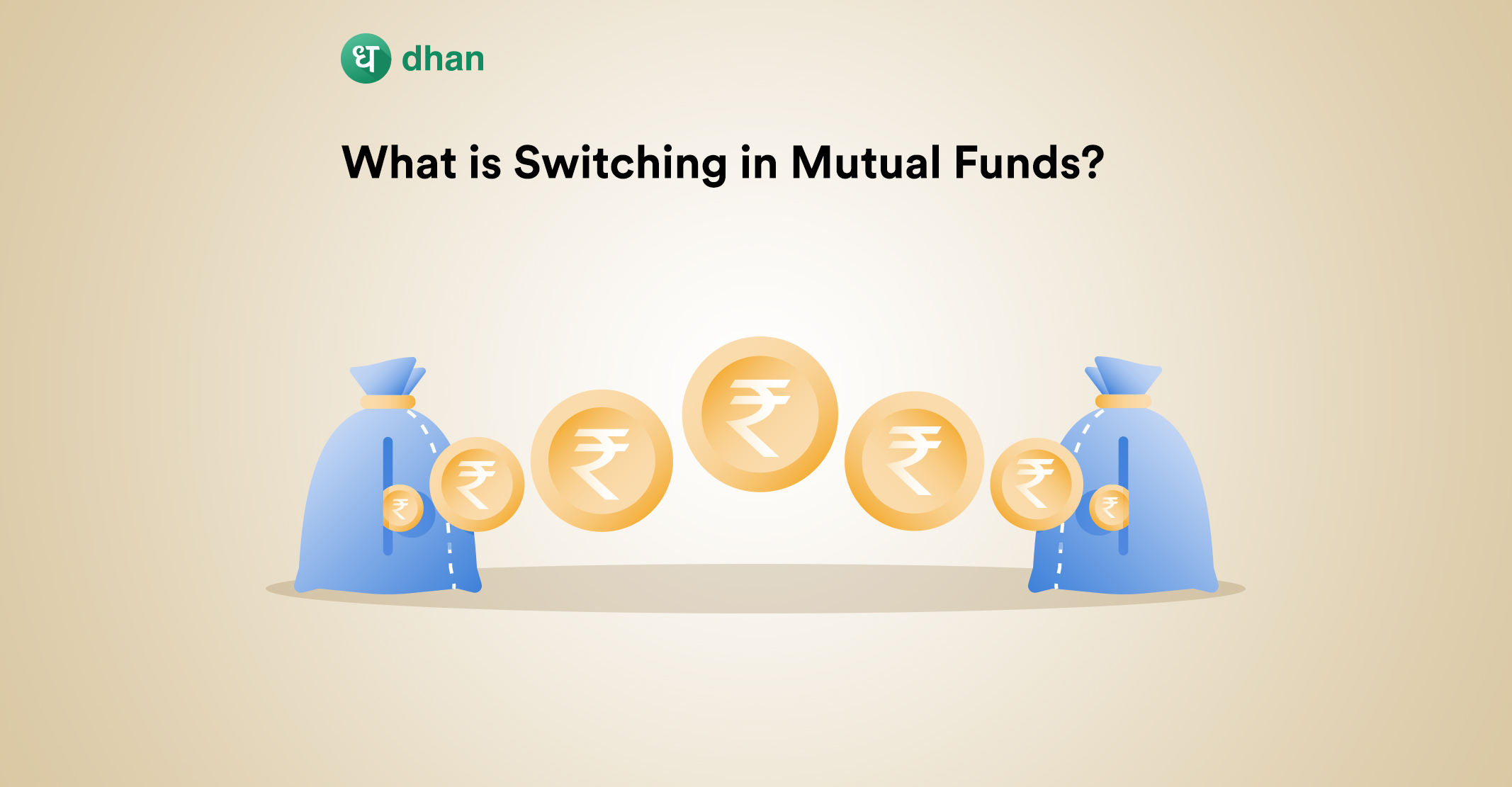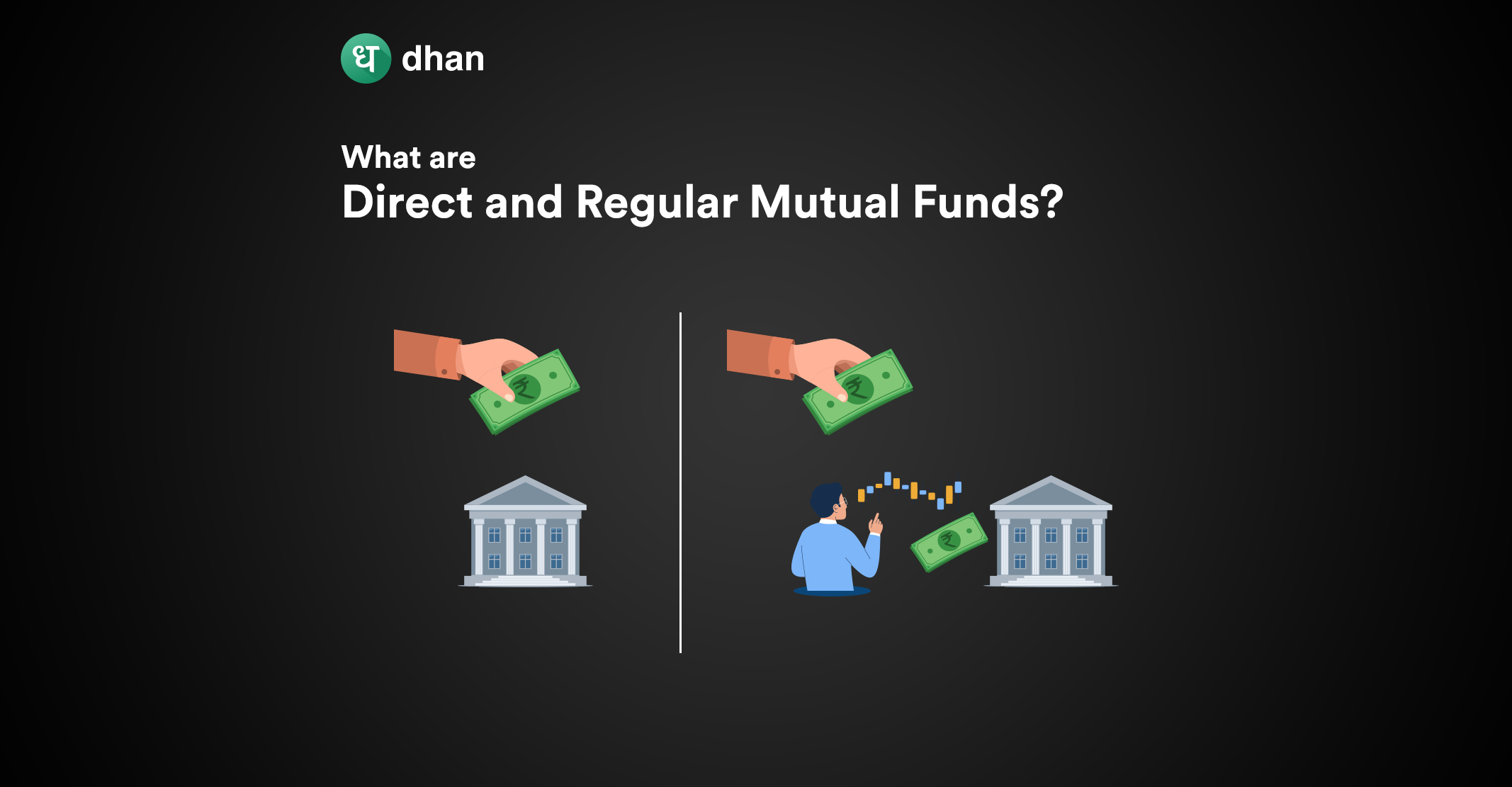A significant number of mutual fund investors buy regular mutual funds recommended or sold by their Bank RM or MF distributor. These regular funds carry a fee that’s relatively more than direct mutual funds which you can invest in via AMCs or a mutual fund platform like Dhan.
The good news is, you can decide to change your investment strategy and switch to a direct scheme. Before you do, however, you should know what is switching in mutual funds as well as what is switch in and switch out in mutual funds. Keep reading to know more!
What is Switching in Mutual Funds?
Regular mutual funds are those that are sold through intermediaries like financial advisors and banks. As a result, regular funds carry a distribution fee that’s as high as 1%. This is deducted from your overall returns.
Direct mutual funds, on the other hand, are sold directly by the mutual fund company without the involvement of intermediaries. That’s why direct funds don’t carry a distribution fee. In theory, you may stand to earn more returns from direct funds.
Moving from a regular mutual fund to a direct mutual fund is known as switching, although the term is used to describe the movement of capital between any two types of mutual fund funds.
What happens when you switch mutual funds is you sell the units of the current fund and buy units of a new fund.
The question is, why would you do that? Because there are no intermediaries involved, direct mutual funds typically have lower expense ratios than regular mutual funds.
When compared to a regular mutual fund, direct funds can provide more control over your investment, greater transparency, and generate better returns.
Switching allows investors to take out their money from a fund and put it in another one that has lower fees but everything else remains the same, right from the portfolio to the fund manager.
But what are your options for switching? Now that we have covered the basics of mutual fund switching, let us discuss how to do it.
Read 👉 What Is Asset Under Management In Mutual Funds?
What is Switch In and Switch Out in Mutual Funds?
Depending on your goals, you can decide to move your investment between mutual fund schemes or fund houses. This is known as ‘switch in and switch out’.
You can redeem your investment from your regular scheme and invest the money in the new direct scheme.
You can fill in the switch form or write a letter to your fund house to request a switch.
You need to mention all relevant details including fund name, option, plan, and the number of units you want to switch. Here is what is meant by “switch in and switch out in mutual funds”.
1. Switch In: Within the Same Fund Scheme
If you want to switch from regular to direct within the same fund house, you need to specify the details of both source and destination schemes in the switch form.
You must fulfill the criteria of minimum investment for the switch and switch out. When switching within the same fund house, you will not face any issues in the settlement period.
2. Switch Out: To a New Fund Scheme
When you choose a direct scheme from another fund house, you must sell your existing fund and invest that money into a new fund.
You can apply for redemption in your current fund and wait to receive the money in your account before making a fresh investment.
Once you receive your money, you can fill up the application form for the new scheme.
Things to Consider Before Switching Mutual Funds
While switching in and out of mutual funds is usually easy, there are some things an investor must keep in mind before deciding to switch.
1. Tax
Mutual fund transactions are subjected to short-term or long-term capital gains tax. When you switch from one scheme to another, it involves the redemption of your current scheme, meaning you’ll have to pay tax on the profits you’ve earned. A smart investor would take this into account while weighing the pros and cons of switching mutual funds.
2. Lock-In
Some mutual fund schemes come with a lock-in period. For example, if you have invested in an Equity Linked Savings Scheme (ELSS), you are not allowed to redeem or move your investment for 3 years. You would not be able to get back your investment within this period, thus making a switch impossible.
3. Exit Load
Exit load is the amount charged when you decide to exit a scheme partially or fully before a certain period. It is one of the ways how mutual funds make money.
This cost is imposed by the Asset Management Company (AMC) whenever the investors choose to sell or redeem their units. If you switch in and switch out, the AMC will first deduct the exit load from your investment and credit the rest.
4. Preference
Switching from regular to direct mutual funds may not be suitable for all investors. Some investors may prefer the services provided by intermediaries, such as financial planning and portfolio management.
You can switch mutual funds at any time during the investment term of your mutual fund scheme. There is no fixed limit to the times you can switch. However, you must take into account the implications of the tax and exit load that you must pay before making a transfer.
Conclusion
Switching mutual funds allow investors to move their investment from one scheme to another within or outside the fund house. For example, you can move from a regular scheme to a direct mutual fund.
It is a helpful tool that gives you the flexibility to make the best decisions about allocating your money. However, you need to consider taxes, charges, and preferences before executing a switch.
Like this? Then you’ll love:



